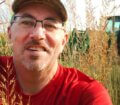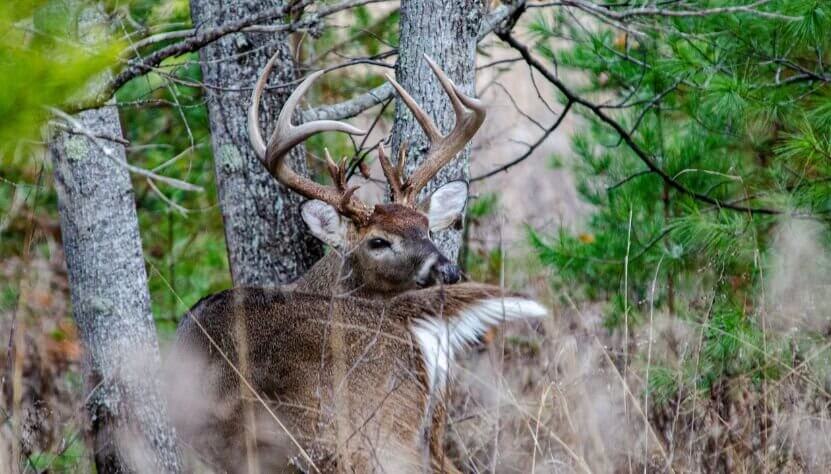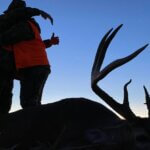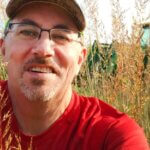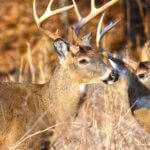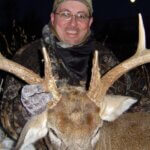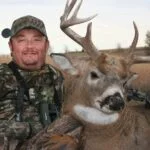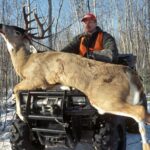Editor’s Note: I’ve known and hunted with Mark Drury of Missouri, co-owner of Drury Outdoors, for over 30 years. I’ve been fortunate enough to watch him not only as a videographer and a TV host but also as a land manager and hunter who’s learned the secrets of growing and taking big white-tailed bucks. Once you learn the Drury system of managing satellite hunting properties and keeping a log of bucks from 2-1/2 years old and older you’re planning to take, you can also produce more and bigger bucks on the properties you hunt, just like Mark does. This week, you’ll learn the system the Drury family uses to consistently find and take older-age-class bucks with bigger racks and bodies than most have ever seen. For more information about Mark Drury, visit his Facebook page.
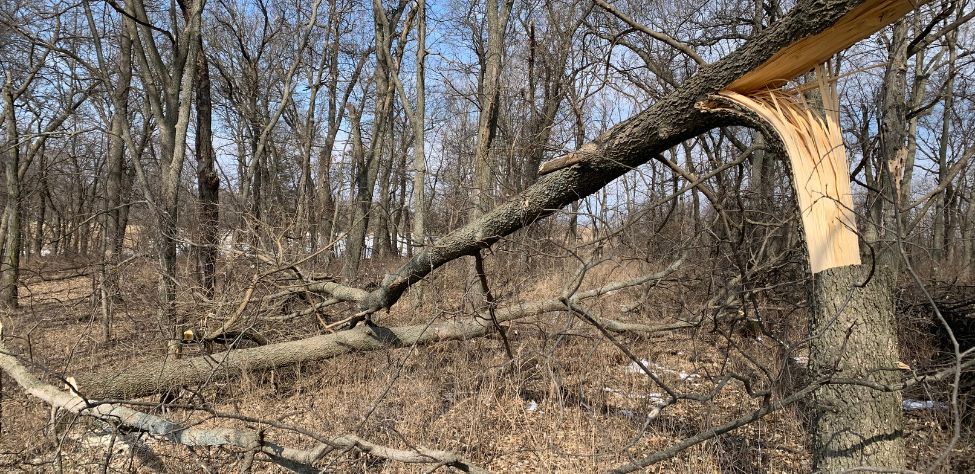
My brother Terry and I have big bucks on the properties we hunt annually. The first thing we’ve done to ensure that we have older-age-class bucks for me, my family, and our guests is to start timber-stand improvement. During this process, we remove undesirable trees that have no timber value to open up the canopy and let more light reach the ground, which increases the number of native trees on the property for the deer. We’ve also noticed that the deer in our area like the morning sun and prefer to sleep on east- and south-facing slopes. By creating more browse and bedding places on our east-facing slopes, the deer most likely will bed there during the late season. To create more browse and bedding regions on north, south, and west-facing slopes, we’ve removed the non-commercial timber because when there’s a south wind, the deer will like to bed there.
We start this program in March and April each year to ensure that the deer on our lands have plenty of natural browse and bedding sites. We also do some bedding-area improvements during the summer months and create regions with immediate cover for the fall. So, we’ll wait until the trees are in full foliage and then hinge-cut the trees, using a chainsaw to cut the trees halfway through and push them over. This method ensures deer activity on our food sources during daylight hours and will be applied about 150–200 yards off a food plot. The deer are much more likely to show up at that food source during daylight hours if they are bedding close to it.
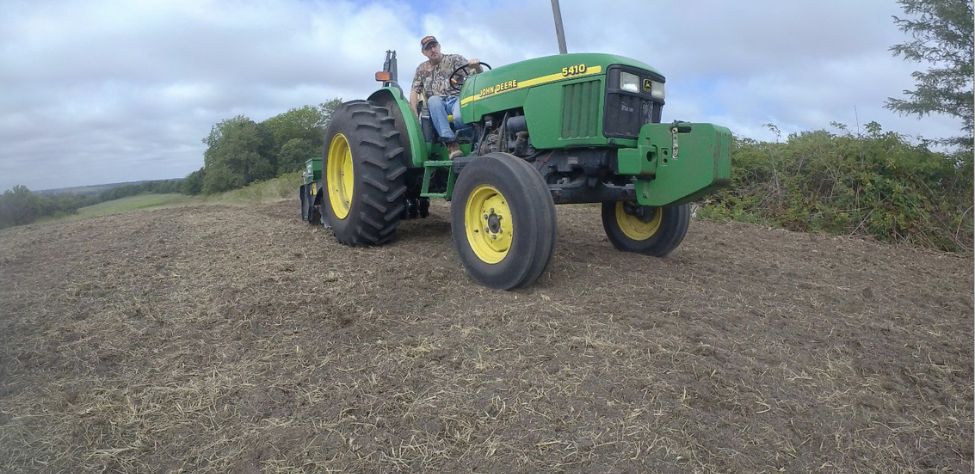
We manage and monitor deer 365 days a year. So, another thing we do to enhance our land is burn about 400 acres of warm-season grass to retard the growth of cold-season grass. In the spring, we’ll plant more supplemental food plots than we’ve ever planted before. Half of our green fields have corn planted, and the other half are filled with soybeans. In total, 41 clover fields and 36 perennial fields, or about 77 green fields, are available for deer before the season arrives. I also have about 30 soybean or corn fields—what we call our destination fields. Each of these is usually 3-5 acres in size and is rotated every year. We start by working our ground to make a good seed bed and using some new chemicals to control the weeds in our green fields better. Initially, we’ve been using Roundup Landscape Weed Preventer, but eventually, we’ve switched to Dicamba after our weeds have become Roundup resistant.
To have older-age-class bucks on the property you hunt, you have to put in time on the land starting in February and continue to improve the land and the herd all year long. We begin with winter feeding right after deer season. Next, we focus on timber stand improvement and spring plantings for supplemental feeding. In the summer, we mow, spray our clover, and finally start our fall planning.

How to Hunt and Take Big Buck Deer on Small Properties
In this book, you’ll hear from 14 hunters who either have gained permission or leased properties as small as six acres to as much as 250 acres, and how they consistently take older-age-class bucks off these little lands.
VERSIONS: AUDIBLE, KINDLE & PRINT

Jim Crumley’s Secrets of Bowhunting Deer
Using a black magic marker and a gray work jumpsuit, Jim Crumley of Buchanan, Virginia, drastically changed the nature and purpose of hunting camouflage when he created the first sportsman’s camouflage – Trebark. Crumley’s love of bowhunting and his desire to be more invisible changed hunting clothing forever.
In this hunting guide, he shares the wisdom that he’s learned throughout his lifetime about how to be a hunter, how to find a deer lease, how to scout for deer, and more.
Special features include how to:
- Have a magic 60 acres to hunt
- Decide the best equipment to use
- Find deer year-round
- Locate land to hunt
- Know the best place to put your tree stand
- Get bucks within bow range
VERSIONS: AUDIBLE, KINDLE & PRINT

How to Hunt Deer Like a Pro
How do you know if the land you hunt has a trophy deer on it? Wildlife manager Bob Zaiglin, of Uvalde, Texas and Jim Crumley, the father of modern-day hunting camouflage, tells you how to find out. GPS can make finding and taking that trophy buck easier. This hunting guide will teach you how to hunt big bucks where no one else can find them, how to call deer, and how to become versatile as a deer hunter, so that if one deer tactic doesn’t work, another one will.
In the chapter, “How to find Bucks at Scrape,” Dr. Keith Causey, retired professor of Wildlife Science at Auburn University, describes the best way to hunt a scrape.
Brad Harrison of Neosho, Missouri, is a nationally-known videographer, professional deer hunter and master at calling deer. Another master is Will Primos of Primos Game Calls. These two experts will tell the best deer calls and when to use them in this book.
And for over 20 years, Bo Pitman, lodge manager of White Oak Plantation, has been studying deer movement patterns. He explains what types of conditions are best for predicting deer movement.
VERSIONS: AUDIBLE, KINDLE & PRINT

Deer hunting and deer hunters are drastically changing each year. To learn new techniques for hunting deer and have more places to hunt, I’ve interviewed some of the best deer hunters in the nation and share their tactics in How to Hunt Deer Like a Pro: Volume II.
In Chapter 10, Jacob Lamar tells you his tactics for consistently taking older-age-class bucks on public lands in several states. Chapter 11, Bob Walker explains how to find places on public lands where you can hunt that 99 percent of the other hunters never have considered hunting. The Bonus Chapter with David Ramey tells you how, where, when and with what equipment to take big Kansas bucks on public lands by hunting in 100-degree weather when others won’t hunt.
Chapter 13, Mark Drury, his family and his guests take mature bucks every season by having more small places to hunt rather than one large property. Drury explains the strategy of having satellite farms to hunt that only may be 50-150 acres each or less. Chapter 15, Pat Reeve, who hunts far-northern states and Canada, says, “I don’t like hunting for mature bucks until the weather is 20 degrees or less.” Chapter 4, Dr. Larry Marchinton says that funnels are the most-reliable stand sites to hunt for big bucks and tells why.
VERSIONS: AUDIBLE & PRINT
Tomorrow: Mark Drury on Planting & Patterning Deer


